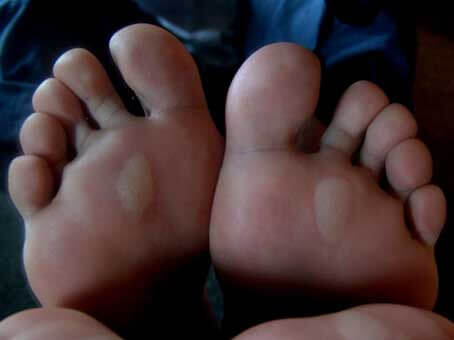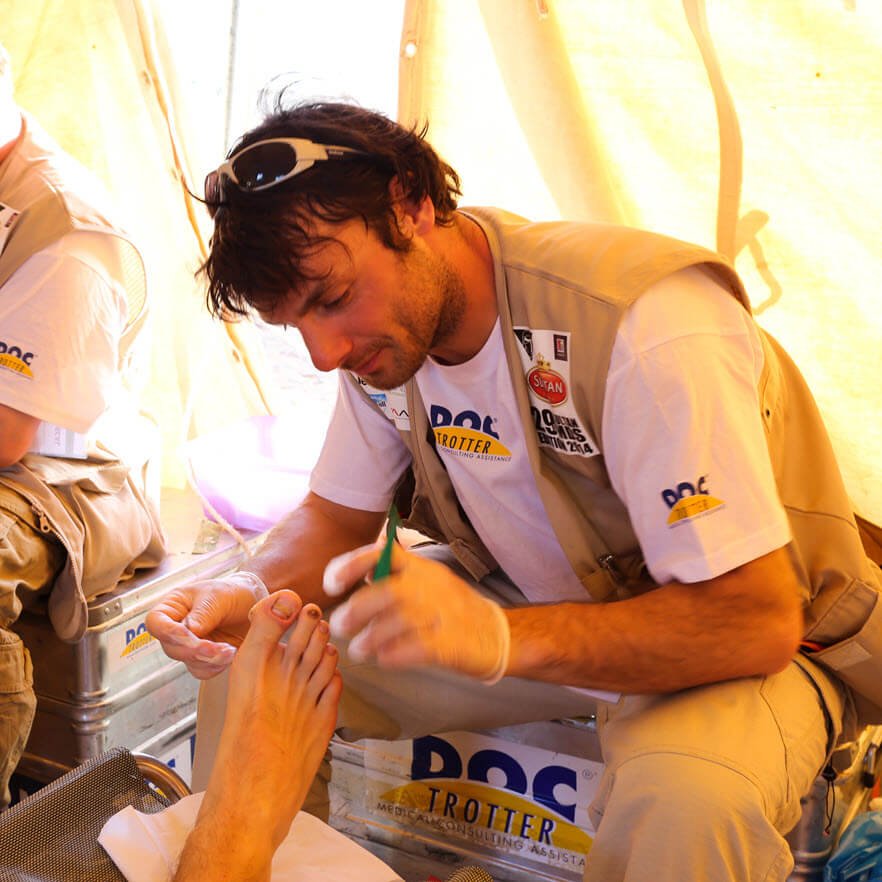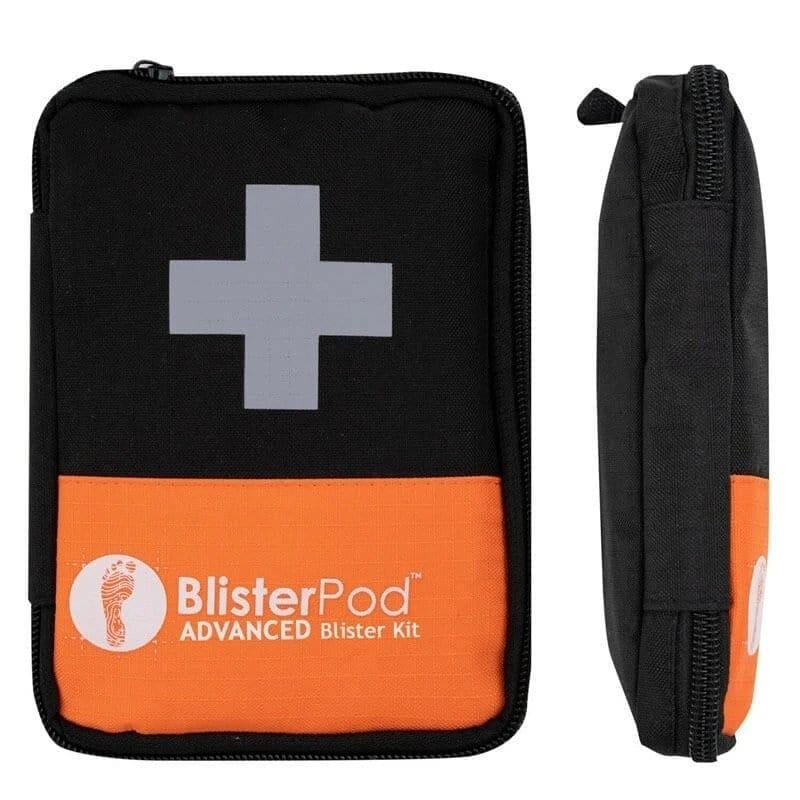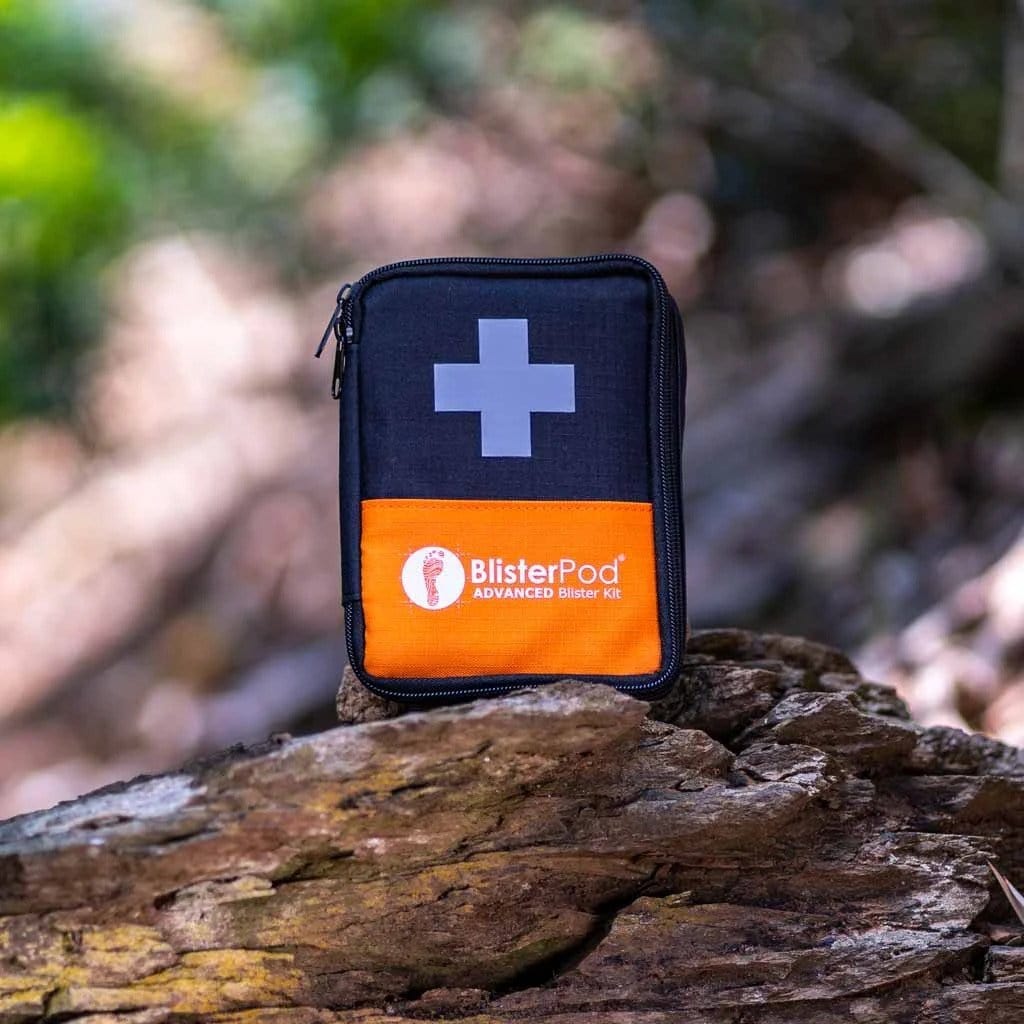- When to pop a blister - when it's a good idea and when it’s a bad idea
- How to pop a blister - does it hurt to pop a blister
- What gear you'll need to pop a blister - it's not just about the piercing implement
- What are the risks of popping blisters - including blood blisters
When To Pop A Blister
Search the general media and you’ll find about 50% against popping and 50% for popping. Some recognise there's a place for both interventions. What's missing is the practical information to help you decide whether your blister needs to be popped or left alone.
Personally and professionally, I'm a fan of popping foot blisters. But only in certain circumstances.
Rather than the question should you pop a blister, the question you should ask yourself when deciding if you should pop your blister is:
"Should I Pop This Blister In These Circumstances?"
It depends entirely on:
- Your blister - Size and location.
- Your situation - Are you at home, out hiking, are your feet dirty or wet, do you have the right gear on hand, do you have any access to medical help, your general health.
For example, let’s say this was your blister (below). Here are 8 scenarios with different answers to the question should I pop my blister?

Question: Would You Pop This Blister If It Was On Your Toe?
SCENARIO 1: You’re about to walk down the street to a friend's place and you're wearing thongs (flip flops).
Answer: No need. You won't be walking on it (it's on the side of the toe). And your shoe won't be pressing on it.
SCENARIO 2: You’re about to leave the house to go for a run.
Answer: Yes. It's going to tear on its own otherwise.
SCENARIO 3: You're half way through your run.
Answer: No. You don't have any equipment on you to do it.
SCENARIO 4: You’ve just got back from your run, noticed this blister but you’ll be spending the rest of the day on the couch.
Answer: No need.
SCENARIO 5: You’re a few hours into a hike. Your friend has a pocket knife and you have some tape.
Answer: No way! You have no idea what germs are on that pocket knife. You have no antiseptic and no island dressing.
SCENARIO 6: You’re a few hours into a hike and you’ve bought your blister kit. In fact, it has sterile dressings, antiseptic and a sterile scalpel blade to lance it.
Answer: Yeah sure. You're all set up to do what needs to be done.
SCENARIO 7: Your hike takes you through river-crossings. The terrain is muddy and even a bit swampy in some parts.
Answer: Nope! Water-logging of your dressing means your dressing is no longer forming a barrier against bacterial movement into your blister.
SCENARIO 8: You’re diabetic or your immune system is low.
Answer: No, it's just too risky. And you need to consider modifying your activity (stop running) until this blister has resolved.
See How It Works. It's Common Sense, Really. Same Blister - Different Scenario - Different Answer.
Here's another example. Let’s say these were your blisters (below). Let's apply the same 8 scenarios. Now these blisters are under the ball of your feet, not on your toe, would you answer any differently?

I would give a different answer to scenario 1. No matter what shoes you wear, as long as you’re on your feet and walking, these blisters will hurt and probably tear anyway. When it's on both feet, you don't even have a good foot to lean on (not that that is a good thing to do anyway). So it makes sense to take the situation into your own hands and lance this blister in a clean and controlled environment. So yes, I would pop this blister in this situation. But only if I had the right gear to do it safely.
What Are The Risks Of Popping Blisters On Feet?

Dealing with the pain of a foot blister, the inconvenience of blister treatment and the downtime in waiting for it to resolve is bad enough. But an infection is a whole different story. It makes your blister more sore, requires more of your attention and things can go nasty quickly. So you need medical help close at hand. And let's face it, while they're tucked away in your shoes, feet spend a lot of time in a dirty, dark, warm, moist environment that lends itself to bacterial infection. And when not in shoes, out feet are what connects us to the ground - a source of limitless germs. So foot blisters are particularly prone to infection.
What About Blood Blisters?
Should You Pop A Blood Blister On Your Foot?
You would err on the side of more caution. The presence of blood indicates more chance of infection. Monitor its progression more closely so you can pick up signs of infection right away. And take steps to address the cause of the bleeding in the blister. You must read this article about treating blood blisters on the feet.
Should You Pop A Burn Blister?
Burn blisters are deeper than the normal friction blisters you get on your feet. In fact the thermal burns that cause blisters are second degree burns. Extreme caution or medical consultation is advised.
Signs Your Blister Is Infected
- Pus
- Increasing pain, swelling or redness
An infected blister requires at least a topical antiseptic (like Betadine), antibiotic cream or possibly oral antibiotics. Read more about treating infected blisters here.
What Constitutes A Medical Emergency?
If you see red streaks extending around your blister and upwards, you need to seek urgent medical attention. This is a condition called lymphangitis (commonly but incorrectly referred to as blood-borne infection or blood poisoning). This is a serious medical condition! Left unchecked, an infection can even lead to severe systemic reactions and death.
How To Pop A Blister On Your Foot (Or Anywhere Really)
If you are going to lance your blister, you need to do it in a clean environment using clean techniques and sterile equipment.
- Firstly, clean your hands and foot (soap and water or antibacterial hand gel).
- Secondly, lance with a sterile implement (sterile scalpel blade or hypodermic needle) – read How Not To Drain A Blister. If necessary, lance it in 2 places where gravity and foot function will help fluid escape (this is a tip from Fixing Your Feet author, John Vonhof).
- Thirdly, apply an antiseptic (eg: Betadine) and dress with a sterile island dressing – read How To Treat Your Foot Blister.
- Fourthly, remove or deflect pressure. And reduce friction levels – read about how to cut friction levels for foot blisters.
- And finally, you need to keep it clean and monitor over the coming days for signs of infection.
Practical Blister Popping (Lancing) Demos
Got A Blister That Needs Lancing But Don't Have The Right Gear?
We've got you covered with our brand new sterile blister lance pack. It contains the gear you'll need for 4 blister lancing and treatment episodes, so you can pop your blisters safely and avoid infection. It also includes detailed instructions on how to prepare your blister, perform the procedure and monitor it as it heals. Choose expedited shipping and you could have this pack in your hands tomorrow.
Does It Hurt To Pop A Blister?
As the videos above show, it shouldn't hurt to pop a blister. If your lancing implement is sharp, there is no need to press, push or squeeze your blister.
Conclusion
When it comes to popping blisters, judge the blister on its anatomical location, your activity, your health and the equipment you have available to you. There are definite advantages to taking the situation into your own hands and popping a blister. Put it this way, it beats ignoring it, putting your shoes back on and hoping for the best. However, popping blisters comes with risks. Therefore, if in doubt, leave it intact. Apply antiseptic and a sterile dressing. Reduce pressure and friction levels. And monitor regularly to ensure it hasn’t torn or become infected. Seek medical attention for specific advice on your situation.
Looking For The Gear You'll Need To Pop Your Blister Safely?
Get it all in the Blister Lance Pack.








